Spring Garden Primer.
Posted on | April 25, 2013 | 6 Comments
1. Soil is everything.
Well, soil is everything until the squash bugs arrive. Then killing squash bugs is everything.
Regardless, your plants need some decent soil in order to get established during the dry spells, flooding, heat waves, and cold snaps of spring. For us that means a trip to the chicken pasture where the chickens have been making compost out of the scraps, bedding straw, manure, and egg shells tossed in there all year long. Don’t worry about leaving holes in the pasture where you scooped out soil. As soon as you leave, the chickens will rush in to excavate for bugs and scratch everything back to normal. Or as soon as you take 2 steps back and put the shovel down.
Once the wheelbarrow is filled with dark, moist compost, fill it up with anything else you think you might need in the garden. And I mean fill it. Because if you don’t take everything, then you might have to make 2 trips. And making 2 trips means….well, making 2 trips.
2. Think microenvironment.
Let’s say you only have a wheelbarrow of soil and a big garden to plant. Perhaps you just have one of those cute little compost tumblers instead of an entire pasture of compost. Maybe you want to leave large swaths of your garden brush and soil intact to attract beneficial insects. Consider if you have recently turned 40 and your back and knees are already complaining about the bending and stooping that lies in wait in the garden. Or imagine if you used pigs to till the garden and they left large of areas of dark crumbly soil,
randomly interspersed with sections of compacted clay and excavated rocks.
Because let’s face it—-rooting is more of an art than a science.
In any case, you really only need enough soil to fill each planting hole or to make a seed bed 3-4″ deep. The rest of the area can just be covered with straw to soften the soil for later and keep down the weeds. I know because creating a suitable microenvironment (instead of digging, hoeing, and filling every raised bed with wheelbarrow after back-breaking wheelbarrow of compost) worked perfect for the early lettuce….
….and snap peas.
3. Don’t forget the little things.
If that 1 load of compost was just enough to fill all the holes and seed beds that you dug, with a few handfuls to spare….
….be sure to give thanks. Because that means God loves you. Or that He hates having to make 2 trips instead of 1 just as much as you do.
Probably the former. Maybe.
I hope.
Also, it should be about time to reapply your sunscreen. Or at least adjust your clothing to avoid that annoying farmer’s tan. Farmer style.
Because skin cancer kills, flip flop tan lines are bad enough, but this is like wearing your muck boots to the supermarket. Farmer faux pas.
It’s the little things that give us away, people. The little things.
4. Practice guilt-free planting.
So you only have a handful of pathetic transplants from the greenhouse….
and the rest came from the local home and garden store. Maybe your seed packets came from a discount rack at the drug store instead of an organic seed catalog. In the end, the most important thing is to get them in the ground. Because sometimes the greenhouse sucks underperforms and seed purchasing gets so complicated with the concerns of hybridization, GMO, cross-pollination, and seed saving issues that it requires its own political affiliation.
Besides, the purchased plants come with lovely, plastic, legible tags. Unlike the cut pieces of egg carton that I recycled to label the plants in the greenhouse. Which cannot be read once the marker washes off during watering or fades in the sunlight.
Oh, I know what you’re thinking. A bit of loose dirt would make those indentations from the writing in the styrofoam stand right out. Yeah, I read that stuff in Nancy Drew, too. Guess what? That’s a fiction series, people. Fiction.
Eh. Does it really matter which type of tomato it is? You say Brandywine, I say Better Boy.
5. Keep your eye on the prize.
Yes, the newcomers are exciting. Sometimes you can taste the cucumber sandwiches as soon as you see their tendrils reaching for the trellis. But don’t get distracted by the latest transplants. The goal of the garden isn’t just to start projects, but to harvest the fruits of your labor. And that’s always a work in progress.
So check the broccoli for cabbage worms….
turn the soil for the next succession planting of seed potatoes….
and weed the onions while you’re down there.
Then toss those weeds to those that made all this possible. Thanks, Penny and Pushy!
6. Basking.
Take a moment to enjoy the joy and hope of the spring garden. The bright lime green seedlings. The buds ready to burst into bloom. The garden beds before the weeds. The foliage before the squash bugs. The way the garden finally emerges from the brown and gray of winter. Ah, spring.
7. Get back to the barnyard.
The key to successful farming is dividing your attention equally between the garden and the barn. If you’ve just spent an entire day in the spring garden, better check the barn before going inside for a glass of iced tea. Because you never know what might have…..yep. Just what I thought. The critters will do anything to get their share of attention. Simon, take that bucket off your head. Simon!!!
8. Hope your kids make Honor Roll.
Because if they do, you get to attend the Straight A Breakfast at school. Where they serve lots of juice. So you can raid the recycling bin for empty plastic juice jugs for the garden. This serves 2 purposes. First, it keeps your kids humble. Nothing like your mom digging through the trash at your middle school celebration to act as an ego check. Second, those jugs can provide a mini-greenhouse for the tender seedlings when a there’s a cold front with nighttime temperatures in the 40’s. Which will happen as soon as you’ve finished Step 6.
Oh sure, we have a recycling bin at home, too. But we don’t drink enough juice or soda to cover the entire garden. And if we just used the type of empty plastic bottle that we do have,…well, what would the neighbors think?
9. Wait for the warm weather to come back.
‘Cause it will. Eventually the fun of putting plastic bottles on and off the pepper, squash, cucmber, and tomato plants depending on the variable temepratures of spring will come to an end. And then the fun of summer heat sets in and the exciting days of choosing between losing your garden to drought or running your well dry. But that’s a whole other post, isn’t it??
Comments

6 Responses to “Spring Garden Primer.”
Leave a Reply
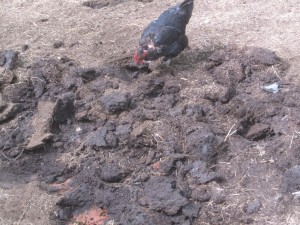
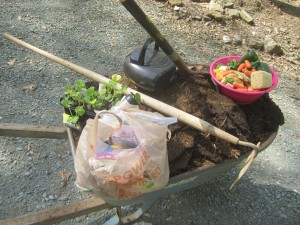
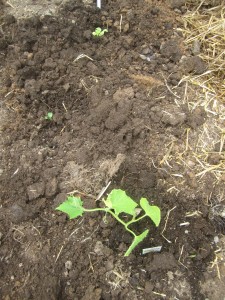
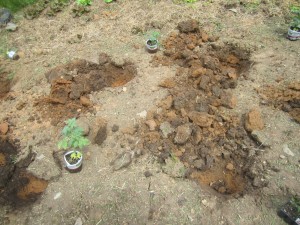
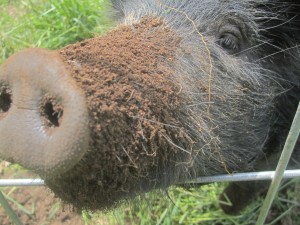
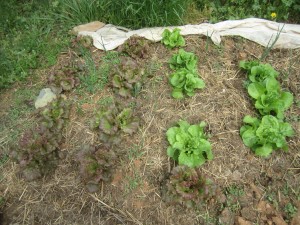
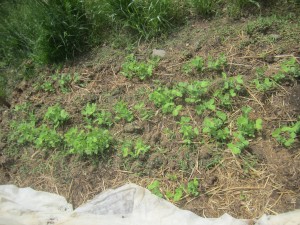
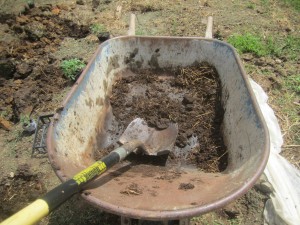

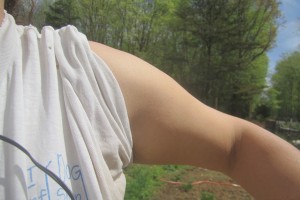

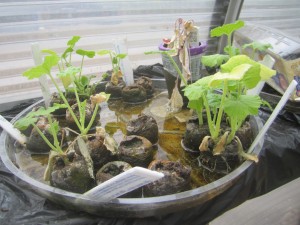
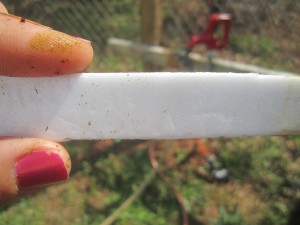
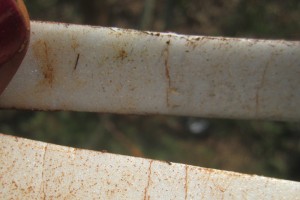
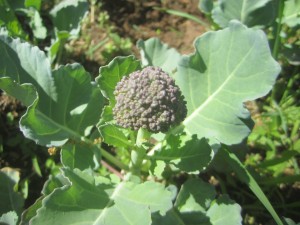
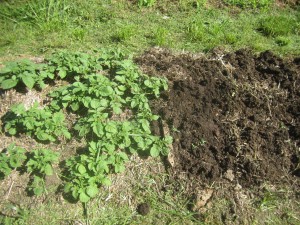
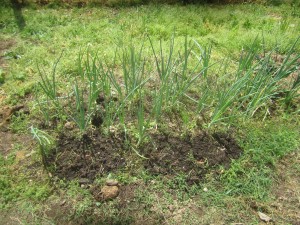
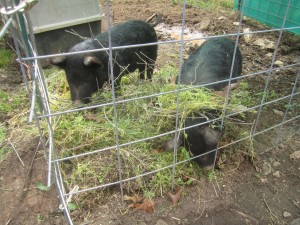
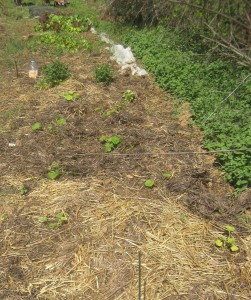
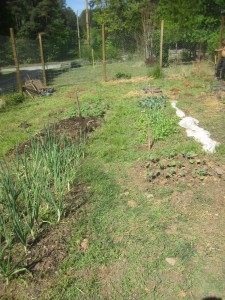
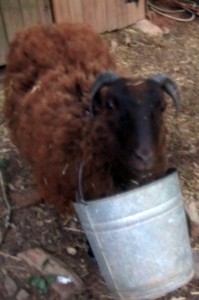
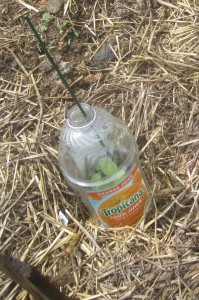
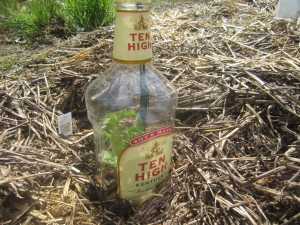
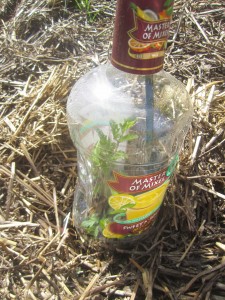



April 25th, 2013 @ 6:18 pm
Oh this post cracked me up! Love your humor about it all! Wishing you luck this growing season 🙂
April 25th, 2013 @ 6:50 pm
I always love your stories. My hat is off to you and all that hard work! I get a giggle every time I read one of your posts!
April 26th, 2013 @ 5:39 am
You did make me chuckle this morning! I always love coming here for a good read. The laughs are a bonus! (Love that goat!)
April 26th, 2013 @ 6:03 am
You still have your manicure!
April 26th, 2013 @ 6:34 am
I know! It lasted almost 2 weeks–through bleaching the bathrooms and hose work with wrenches and pliers plus fence repair and digging in the garden! I cannot imagine what kind of chemical was in that polish!
April 26th, 2013 @ 7:36 am
Once I had a brilliant idea, I cut up the mini blinds in my (rented) house to make labels for the garden.. yup, brilliant! I still use them. write with pencil and they last forever.